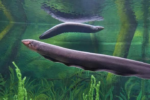Deep beneath the surface of the Gulf of Mexico lies a chilling phenomenon known as the ‘Hot Tub of Despair.’ Discovered by researchers in 2015, this underwater pool is filled with a toxic mixture of hydrogen sulfide, methane, and ultra-salty water, creating an environment so lethal that it can kill nearly any creature that swims into it. Measuring approximately 100 feet wide and 12 feet deep, this bottomless pool serves as a stark reminder of the ocean’s hidden dangers and the unique ecosystems that thrive in extreme conditions.
The Hot Tub of Despair
While examining the ‘cold seeps’ in the Gulf of Mexico, the Ocean Exploration Trust stumbled onto the bottomless pond. Dense hydrocarbons, the building blocks of gasoline and oil, seep into the water column in this area from beneath the bottom. When ancient oceans evaporate, frigid seeps are left behind, forming vast layers of salt.
The shifting and cracking of salt layers creates openings that allow substances that are often contained below the surface to escape. Huge amounts of salt are occasionally dissolved by water found in the sediment layers during the formation of fractures, creating a brine that is four times saltier than saltwater.
The brine is so thick that it sinks to the ocean floor and is difficult to mix with the surrounding salt water. Strange underwater lakes and ponds like the “Hot Tub of Despair” are created by “brine pools” in areas where saltwater wells up. The wall, which rose three meters above the seafloor and was composed of accumulated minerals and live mussels, was discovered by the researchers with the aid of a remote-operated vehicle they called Hercules.
Unique Ecosystem and Research Discoveries
It was discovered to be filled with a layer of brine that was 12 feet (3.7 meters) deep and situated atop a pond of liquidized muck that had no bottom. Despite its deadly reputation, some organisms have adapted to survive in this extreme environment. Certain species of mussels and tubeworms thrive on the edges of the pool, relying on symbiotic bacteria to convert toxic gases into energy.
Researchers continue to study this unique ecosystem to gain insights into how life can persist in such inhospitable conditions. The ‘Hot Tub of Despair’ not only fascinates scientists but also raises questions about the broader implications for marine biology and environmental health in our oceans.




GIPHY App Key not set. Please check settings